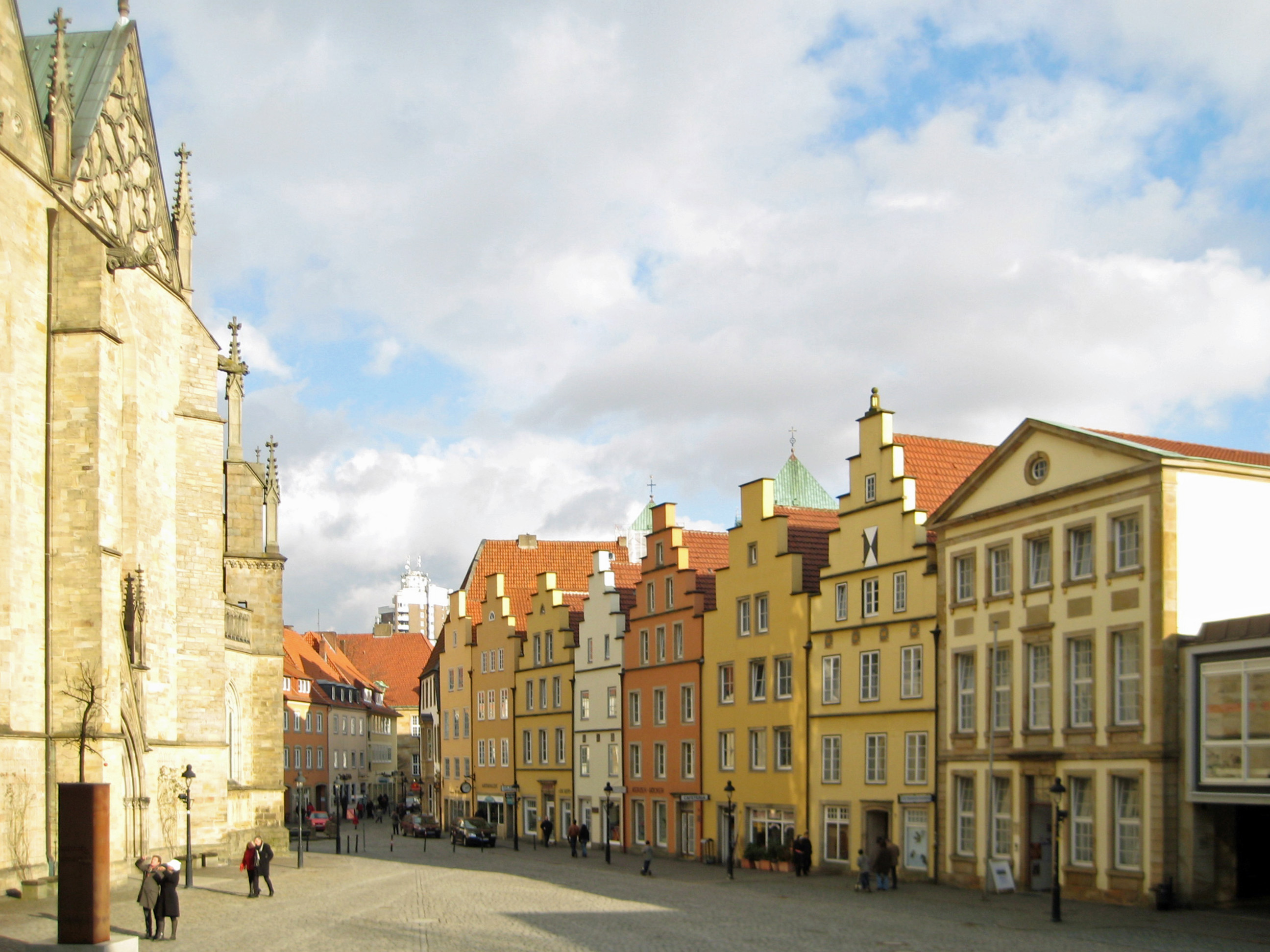Old Town Osnabrück on:
[Wikipedia]
[Google]
[Amazon]
 Osnabrück's old town (
Osnabrück's old town (
Altstadt Osnabrück, Sehenswürdigkeiten, November 11,2013
/ref>
File:Osnabrück Dom Westseite.jpg, Sankt Peter cathedral
File:OSRathaus.JPG, Town hall in 2008
File:St. Marien Osnabrueck.jpg, View from the market place on the Marienkirche
File:Osnabrück Marienkirche Eingangsportal.JPG, Brideportal on the church
File:OSHegerTor.JPG, Heger Tor
File:Osnabrück Weihnachtsmarkt 1.JPG, Nutcracker on the Christmas market
Historischer WeihnachtsmarktMaiwoche 2014 OsnabrückOsnabrücker Land, Tourist informationTheater Osnabrück, ProgrammFelix Nussbaum Haus, Museum
{{DEFAULTSORT:Old town Osnabruck Geography of Osnabrück Tourist attractions in Osnabrück
German
German(s) may refer to:
* Germany, the country of the Germans and German things
**Germania (Roman era)
* Germans, citizens of Germany, people of German ancestry, or native speakers of the German language
** For citizenship in Germany, see also Ge ...
: ''Altstadt'') is the historic and original core of the city Osnabrück
Osnabrück (; ; archaic English: ''Osnaburg'') is a city in Lower Saxony in western Germany. It is situated on the river Hase in a valley penned between the Wiehen Hills and the northern tip of the Teutoburg Forest. With a population of 168 ...
, Lower Saxony, Germany, also called Heger Tor Viertel.
History
The city was founded 780 byCharlemagne
Charlemagne ( ; 2 April 748 – 28 January 814) was List of Frankish kings, King of the Franks from 768, List of kings of the Lombards, King of the Lombards from 774, and Holy Roman Emperor, Emperor of what is now known as the Carolingian ...
, king of the Franks
file:Frankish arms.JPG, Aristocratic Frankish burial items from the Merovingian dynasty
The Franks ( or ; ; ) were originally a group of Germanic peoples who lived near the Rhine river, Rhine-river military border of Germania Inferior, which wa ...
. Around 800 made Charlemagne the area to the new bishopric and the missionary Wiho became Osnabrück's first bishop. The town walls with its towers from this time are the borders for the old town.
Osnabrück played an important role in the Thirty Years' War
The Thirty Years' War, fought primarily in Central Europe between 1618 and 1648, was one of the most destructive conflicts in History of Europe, European history. An estimated 4.5 to 8 million soldiers and civilians died from battle, famine ...
. The war that was mainly fought in central Europe was one of the longest and most destructive conflicts in European history. Initially the war started between Catholics and Protestants, although they were all Christians. As the time and the war drew on the conflict became more general involving most of the great powers in Europe.
Between May and October 1648 were the peace treaties signed in Osnabrück and Münster. The Peace of Westphalia ended with that the Thirty Years' War and Osnabrück became the city of Peace with many historical artifacts from this time.
Tourism and sights
Cathedral
The Sankt Peter cathedral of the Osnabrück bishopric was first ordained 785, and rebuilt twice. The second one was destroyed by a fire in 1100 and renovated from 1218 to 1277. The cathedral has two towers. The northwest tower is source; the other was replaced in the 15th century by a larger Gothic tower.Town hall
It took over 25 years to finish the town hall which is located in the central of the old town just next to the Marienkirche. The hall is built in typical Late Gothic style with little towers on the corners and eight statues on the front side of the building. The peace treats for theThirty Years' War
The Thirty Years' War, fought primarily in Central Europe between 1618 and 1648, was one of the most destructive conflicts in History of Europe, European history. An estimated 4.5 to 8 million soldiers and civilians died from battle, famine ...
were signed there in 1648 and 42 portraits are hung in the peace hall of European envoys and monarchs of the time, including Louis XIV
LouisXIV (Louis-Dieudonné; 5 September 16381 September 1715), also known as Louis the Great () or the Sun King (), was King of France from 1643 until his death in 1715. His verified reign of 72 years and 110 days is the List of longest-reign ...
of France and Christina, Queen of Sweden
Christina (; 18 December O.S. 8 December">Old_Style_and_New_Style_dates.html" ;"title="nowiki/>Old Style and New Style dates">O.S. 8 December1626 – 19 April 1689), a member of the House of Vasa, was Monarchy of Sweden, Queen of Sweden from ...
.
Marienkriche
The church is next to the town hall In 1543 it was changed to a Protestant church.Heger Tor
The Heger Tor, also called Waterloo Tor is a part of the town walls and the entrance to the old town. The gate was rebuilt in 1817, two years after thebattle of Waterloo
The Battle of Waterloo was fought on Sunday 18 June 1815, near Waterloo, Belgium, Waterloo (then in the United Kingdom of the Netherlands, now in Belgium), marking the end of the Napoleonic Wars. The French Imperial Army (1804–1815), Frenc ...
. The gate was designed by Johann Christian Sieckmann. The gate looks like a triumphal arch
A triumphal arch is a free-standing monumental structure in the shape of an archway with one or more arched passageways, often designed to span a road, and usually standing alone, unconnected to other buildings. In its simplest form, a triumphal ...
./ref>
Picture gallery
References
External links
*{{DEFAULTSORT:Old town Osnabruck Geography of Osnabrück Tourist attractions in Osnabrück